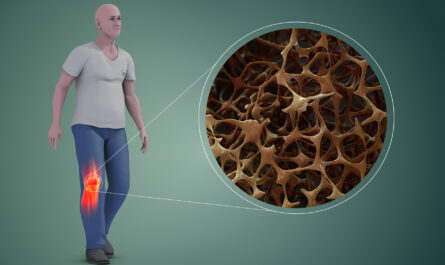
Prosthetics and orthotics are medical fields that provide life-enhancing devices to assist people with impaired mobility. Advances in technology have greatly improved prosthetics and orthotics over the past few decades, allowing more people to regain independence and improve their quality of life. This article explores the fields of prosthetics and orthotics, highlights some key developments, and discusses how they are empowering individuals and advancing mobility.
Definition and Scope
Prosthetics involves the design, creation, and fitting of artificial limbs or prostheses. This includes devices that replace missing arms, legs, hands, feet or parts of the body. Orthotics focuses on custom bracing or orthopedic devices to support or align parts of the body such as backs, knees, ankles or limbs. Both prosthetics and orthotics serve to restore functionality for people with congenital limb deficiencies or those who have lost a limb through injury, illness or surgery. The fields encompass a wide range of devices from sophisticated bionic limbs to basic braces. Professionals in these areas work closely with patients to create customized solutions based on individual functional needs and lifestyles.
Technological Advances in Prosthetics
In recent decades, advances in materials science and engineering have revolutionized prosthetics. Where artificial limbs were once purely mechanical, microprocessors and lightweight materials have enabled prostheses with far greater functionality. Some key developments include:
– Myoelectric arms: Powered by electric motors and controlled through electrodes placed on remaining muscles, myoelectric prosthetic arms can perform highly dexterous movements like grasping cups and turning door knobs. Some even have sense of touch.
– Microprocessor knees: Using sensors and computers, microprocessor knees can dynamically adjust resistance for walking up/down hills or stairs, much like a natural knee. This improves stability and energy efficiency.
– 3D printing: Additive manufacturing allows bespoke socket designs to be precisely tailored for individual limb shapes using 3D scans. It has also enabled lightweight prostheses with intricately engineered plastic and carbon fiber parts.
– Brain-computer interfaces: Researchers are working on prosthetic limbs directly controlled by thoughts through neural implants. Some systems can already detect intended motions and guide artificial limbs. This ‘direct neural interfacing’ could revolutionize natural control schemes.
Advancing Orthotics
While less advanced than prosthetics, orthotics has also benefited from new materials and technologies:
– Carbon fiber orthoses: Ultra-light yet stiff carbon composites have improved leg braces used for ankle injuries or knee osteoarthritis, reducing muscle fatigue.
– Custom thermoplastics: Heated plastic stock is formed to patients’ individual limb shapes, creating precisely fitting orthoses for feet, wrists and more with biomechanical advantages over traditional materials.
– 3D-printed orthoses: Additive manufacturing allows rapid creation of custom, open-source orthotic designs like for clubfoot or scoliosis. It reduces production times and costs compared to traditional fabrication methods.
– myOrthoses: Similar to myoelectric prosthetics, “powered” orthoses using sensors, microprocessors and actuators are in development to enhance orthotic functionality, such as active knee braces providing extra “lift” to users.
Transforming Lives through Mobility
The enhancements brought about by new technologies have had profoundly positive impacts across diverse user groups. For amputees, prosthetics restore independence by allowing activities like driving, swimming or returning to active careers. They improve quality of life by reducing physical limitations and restoring body image.
Orthotics have also helped transform lives through enhanced mobility. Custom braces enable young patients with clubfoot to run and play normally. Advances in orthotics have allowed aging athletes or those with arthritis to stay physically active through innovations like responsive microprocessor knees. Carbon fiber orthoses even empower Paralympians to achieve world-class feats.
The Road Ahead
While advances have been remarkable, more work remains. Researchers are developing ever more dexterous and sensitive prosthetic hands. Biomimetic sockets promise seamless integration into residual limbs. Brain-computer interfaces could realize the dream of thought-controlled prostheses operating intuitively as natural limbs. Orthotics too continue innovating – from smart devices adjusting in real-time to 3D-printed exoskeletons enhancing performance.
With ongoing breakthroughs applying materials science, mechatronics, biomechanics and computer interfacing, prosthetics and orthotics will only become more empowering and transformative. They will further restore mobility and independence, allowing even more people irrespective of ability to achieve their fullest potential and lead full lives. The progress seen so far leaves one excited by all that is still to come in these fields.
*Note:
1. Source: Coherent Market Insights, Public sources, Desk research
2. We have leveraged AI tools to mine information and compile it


